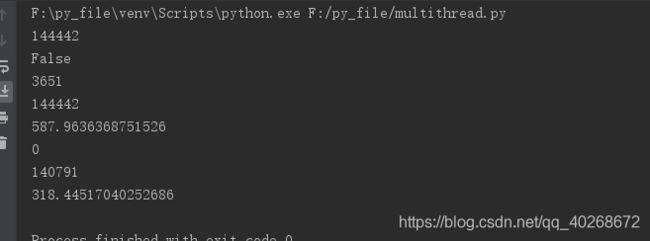- Python爬虫实战:研究MarkupSafe库相关技术
ylfhpy
爬虫项目实战python爬虫开发语言MarkupSafe
1.引言1.1研究背景与意义随着互联网数据量的爆炸式增长,网页内容自动提取与分析技术在信息检索、舆情监控、数据挖掘等领域的需求日益凸显。网络爬虫作为获取网页内容的核心工具,能够自动化采集互联网信息。然而,直接渲染爬取的网页内容存在安全隐患,特别是跨站脚本攻击(XSS)风险。攻击者可能通过注入恶意脚本窃取用户信息或破坏网站功能。MarkupSafe作为Python的安全字符串处理库,能够有效处理不可
- Python爬虫实战:研究sanitize库相关技术
ylfhpy
爬虫项目实战python爬虫网络开发语言安全sanitize
1.引言1.1研究背景与意义在当今数字化时代,互联网已成为人们获取信息、交流互动的重要平台。随着Web2.0技术的发展,用户生成内容(UGC)、社交媒体嵌入、第三方插件等功能极大丰富了网页的内容和交互性,但也带来了严峻的安全挑战。根据Web应用安全联盟(WAS)的统计数据,2025年全球范围内因网页安全漏洞导致的数据泄露事件超过15万起,造成的经济损失高达250亿美元。其中,跨站脚本攻击(XSS)
- Python爬虫实战:研究xmltodict库相关技术
ylfhpy
爬虫项目实战python爬虫开发语言xmltodict
1.引言1.1研究背景与意义气象数据在农业生产、交通规划、灾害预警等多个领域具有重要应用价值。传统的气象数据获取方式主要依赖于气象部门发布的统计信息,存在更新不及时、数据维度有限等问题。随着互联网技术的发展,气象网站提供了丰富的实时气象数据,但这些数据通常以HTML、XML等非结构化或半结构化形式存在,难以直接利用。因此,开发高效的数据采集与解析系统具有重要的现实意义。1.2国内外研究现状网络爬虫
- Pthon httpx 使用代理下载文件(qbit)
前言技术栈Python3.11.8httpx0.28.1示例代码#encoding:utf-8#author:qbit#date:2025-06-30#summary:httpx使用代理下载文件importhttpxproxy='http://127.0.0.1:8081'defDownFile(url,file):withopen(file,'wb')asf:withhttpx.stream('
- python网络安全实战_基于Python网络爬虫实战
weixin_39907850
python网络安全实战
文件的操作:一般都要使用os模块和os.path模块importos.pathos.path.exists('D:\\Python\\1.txt')#判断文件是否存在abspath(path)#返回path所在的绝对路径dirname(p)#返回目录的路径exists(path)#判断文件是否存在getatime(filename)#返回文件的最后访问时间getctime(filename)#返回
- Java流式处理
太阳伞下的阿呆
java生成器迭代器stream流式处理
在Java中,没有直接类似Python生成器的语法,但可以通过迭代器(Iterator)和流式处理(如使用Spliterator或ReactiveStreams)来实现类似生成器的功能。此外,也可以通过BlockingQueue和线程的组合实现异步文件解压流。以下是几种实现方式:**方法1:使用****Iterator**实现一个Iterator,在每次调用next()时返回解压完成的下一个文件名
- 【Python系列PyCharm控制台pip install报错】如何解决pip安装报错ModuleNotFoundError: No module named ‘numpy’问题
【Python系列PyCharm控制台pipinstall报错】如何解决pip安装报错ModuleNotFoundError:Nomodulenamed‘numpy’问题摘要在日常Python开发过程中,pipinstall相关的问题频繁困扰着新手和老手。尤其是在PyCharm控制台下执行pipinstallnumpy后,仍然报ModuleNotFoundError:Nomodulenamed'n
- 【Python系列PyCharm控制台pip install报错】如何解决pip安装报错ModuleNotFoundError: No module named ‘flask’问题
lyzybbs
全栈Bug解决方案专栏pythonpycharmpipsklearn开发语言flaskpandas
【Python系列PyCharm控制台pipinstall报错】如何解决pip安装报错ModuleNotFoundError:Nomodulenamed‘flask’问题摘要在进行Python开发时,我们常常会遇到通过pipinstall安装依赖包时出现的各种问题。其中最常见的报错之一是ModuleNotFoundError:Nomodulenamed‘flask’。这个错误通常发生在安装Flas
- MCP+A2A:从实验室到生产环境的落地之旅
CarlowZJ
AI应用落地+MCP+A2A数据库MCP+A2A
目录摘要一、引言二、MCP与A2A概念讲解(一)MCP(ModelContextProtocol)(二)A2A(Application-to-Application)(三)MCP与A2A的融合三、MCP+A2A技术架构图与工作流程图(一)整体架构图(二)工作流程图四、MCP+A2A代码示例(一)基于Python的MCP+A2A通信示例(二)基于Java的MCP+A2A应用集成示例五、MCP+A2A
- Python爬虫实战:研究difflib库相关技术
ylfhpy
爬虫项目实战python爬虫easyui开发语言前端difflib
1.引言1.1研究背景与意义在信息爆炸的数字时代,互联网每天产生海量文本内容。据统计,全球新闻网站日均发布文章超过300万篇,社交媒体平台产生的文本信息量更以亿级单位增长。这种信息过载带来了内容同质化、抄袭剽窃等问题,给新闻媒体行业、学术研究领域和搜索引擎优化等带来了挑战。文本相似度分析作为自然语言处理的重要分支,能够有效识别内容间的相似程度,具有重要的应用价值:新闻媒体行业:通过检测新闻抄袭和重
- 3 大语言模型预训练数据-3.2 数据处理-3.2.2 冗余去除——2.SimHash算法文本去重实战案例:新闻文章去重场景
SimHash算法文本去重实战案例:新闻文章去重场景一、案例背景与目标二、具体实现步骤与示例1.**待去重文本示例**2.**步骤1:文本预处理与特征提取**3.**步骤2:特征向量化与哈希映射**4.**步骤3:特征向量聚合**5.**步骤4:降维生成SimHash值**6.**步骤5:计算汉明距离与去重判断**三、工程化实现代码(Python简化示例)四、案例总结与优化点一、案例背景与目标假设
- python系列教程246——多态
人工智能AI技术
python系列教程python开发语言
朋友们,如需转载请标明出处:https://blog.csdn.net/jiangjunshow声明:在人工智能技术教学期间,不少学生向我提一些python相关的问题,所以为了让同学们掌握更多扩展知识更好地理解AI技术,我让助理负责分享这套python系列教程,希望能帮到大家!由于这套python教程不是由我所写(有时候有空也会参与编写),所以不如我的人工智能教程风趣幽默,学起来比较枯燥;但它的知
- Python 解析 AI 在能源管理与智能电网中的应用
头发在线失联
python人工智能开发语言
```htmlPython解析AI在能源管理与智能电网中的应用Python解析AI在能源管理与智能电网中的应用随着全球对可持续发展的重视和能源需求的不断增长,能源管理与智能电网技术正在成为研究和实践的重要领域。在这个背景下,人工智能(AI)作为一项前沿技术,正被广泛应用于能源管理与智能电网中,以提高效率、优化资源分配并减少环境影响。本文将探讨Python如何在这一领域中发挥作用,并解析其具体应用场
- 如何实现聊天模型响应流式处理
yunwu12777
langchain
在现代人工智能应用中,流式处理聊天模型的响应成为一种常见需求,特别是在需要实时输出或大规模处理时。本文将详细介绍如何在Python中实现聊天模型的同步和异步流式处理,使用langchain库中提供的ChatAnthropic模型作为示例。技术背景介绍流式处理是指从模型逐步获取输出,而不是等待整个输出完成。这对于处理长文本生成或需要动态响应的应用场景特别有用。langchain库中的聊天模型实现了R
- 解锁UV工具新玩法:让Python脚本运行更高效的实用技巧
marao
pythonuv深度学习开发语言人工智能
作为Python开发者,你是否经常被依赖安装的漫长等待、虚拟环境的繁琐管理,或是脚本分享时“环境不一致”的问题困扰?近年来,一款名为UV的工具悄然兴起,它不仅以极速安装依赖著称,更通过一系列创新设计重构了Python脚本的运行逻辑。本文主要介绍UV的三大实用技巧,从“依赖即代码”到“动态环境隔离”,体验真正“即写即跑”的高效开发模式。1.极速启动:1秒搞定依赖安装,告别虚拟环境烦恼传统Python
- Centos7.9 使用宝塔部署Python3.12 .0
cceyatao
python宝塔python3.12python项目管理器
使用宝塔安装Python3.12运行之后提示ImportError:Nomodulenamed_ssl,因为服务器有python2.7的项目正在运行,所以需要新建python3.12.0因为CentOS7默认的OpenSSL1.0.x较旧,不满足Python3.12的要求(需要1.1.1或更高)1、安装OpenSSL:CentOS7默认OpenSSL可能较旧(1.0.x)。安装OpenSSL1.1
- python中解决Chrome中文字体显示为方框的问题
张苹果博客
pythonchrome开发语言
当您在CentOS或RHEL系统上处理中文内容时,可能会遇到字体显示为方框或乱码的情况。这是因为系统默认没有安装中文字体包。本指南将详细介绍如何正确安装和配置中文字体。原文地址:python中解决Chrome中文字体显示为方框的问题-张苹果博客字体显示问题示例如下:在CentOS/RHEL上安装中文字体的正确方法1.使用yum安装中文字体#安装文泉驿中文字体sudoyuminstall-ywqy-
- Python包管理新纪元:极速工具 uv 完全指南(2025最新版)
coder_风逝
Python数据挖掘分析pythonuv开发语言
作为Python开发者,你是否还在忍受pip缓慢的依赖解析速度?是否厌倦了在virtualenv、pip-tools和poetry之间来回切换?今天我要向大家介绍一款革命性的工具—uv,它将彻底改变你的Python开发体验!一、uv是什么?uv是由打造了Ruff(Python超速Linter)的Astral团队开发的全新Python包管理工具,基于Rust编写,旨在成为"Python界的Cargo
- Python 包管理新选择:全面了解 uv(附 Conda 对比)
茫茫人海一粒沙
pythonuvconda
在Python的世界里,我们常用pip安装依赖,用venv创建虚拟环境,还可能用pip-tools来生成锁文件。这些工具虽然灵活,但组合使用时也容易让人混乱。最近,一个名叫uv的新工具火了起来,目标是统一和简化整个Python包管理流程。uv是什么?uv是由Astral开发的一个超快的Python包管理器,用Rust编写。它旨在作为pip、pip-tools、virtualenv和python-b
- 同花顺python_【本地直连】同花顺 Python量化交易接口上线
weixin_39938724
同花顺python
来源:雪球App,作者:私募之家THS,(https://xueqiu.com/5808549553/129022113)导读:同花顺智能交易终端MindGo版已上线2年多,凭借着同花顺深厚的技术底蕴,不断地对终端进行优化。至今,已服务近1000位个人客户,超过200家私募机构,市场份额不断扩大。目前终端已实现:支持股票、指数、基金、期货、外汇、黄金T+D等6个品种日/分钟级策略回测投研策略无缝对
- 基于SpringBoot律师事务所案件管理系统的设计与实现
一点教程
Java项目springboot后端javaspring律师事务所案件管理系统
博主主页:一点教程博主简介:专注Java技术领域和毕业设计项目实战、Java微信小程序、安卓等技术开发,远程调试部署、代码讲解、文档指导、ppt制作等技术指导。主要内容:毕业设计,SpringBoot、Vue、SSM、HLMT、Jsp、PHP、Python、Nodejs、小程序、安卓app、大数据等设计与开发感兴趣的可以先收藏起来,还有大家在毕设选题,项目以及论文编写等相关问题都可以和博主沟通,希
- Python爬虫实战:使用Scrapy+Selenium+Playwright高效爬取Stack Overflow问答数据
Python爬虫项目
2025年爬虫实战项目python爬虫scrapy微信开发语言科技selenium
摘要本文将详细介绍如何使用Python生态中最先进的爬虫技术组合(Scrapy+Selenium+Playwright)来爬取StackOverflow的问答数据。我们将从基础爬虫原理讲起,逐步深入到分布式爬虫、反反爬策略、数据存储等高级话题,并提供完整的可运行代码示例。本文适合有一定Python基础,想要掌握专业级网络爬虫技术的开发者阅读。1.爬虫技术概述1.1为什么选择StackOverflo
- Python爬虫实战:使用Scrapy+Selenium+Playwright高效爬取Coursera课程信息
Python爬虫项目
2025年爬虫实战项目python爬虫scrapy微信开发语言科技selenium
前言在当今信息爆炸的时代,在线教育平台如Coursera提供了海量的高质量课程资源。对于学习者、教育研究者和数据分析师来说,获取这些平台的课程信息具有重要价值。本文将详细介绍如何使用Python爬虫技术高效爬取Coursera课程信息,并分析其中的技术难点与解决方案。1.Coursera网站分析Coursera是一个典型的现代Web应用,具有以下特点:采用React/Vue等前端框架构建,大量内容
- Python爬虫实战:借助工具高效采集微信公众号文章
Python爬虫项目
python爬虫微信facebook音视频开发语言
导语微信公众号作为信息传播的重要平台,涵盖了新闻、技术、生活等各个领域的优质内容。对于数据分析师、内容整理者或研究人员而言,系统地采集公众号文章内容具有重要意义。然而,微信公众号对爬虫设置了较强的反爬机制,直接采集存在一定难度。本文将结合实际案例,介绍如何借助工具和Python技术高效采集微信公众号文章。1.项目目标与需求定义目标:采集指定微信公众号的历史文章,包括标题、链接、发布时间等信息;支持
- 高效主机发现与端口枚举:fscan工具实战指南
Bruce_xiaowei
笔记总结经验网络安全fscan信息搜集
高效主机发现与端口枚举:fscan工具实战指南在网络安全领域,主机发现与端口枚举是渗透测试和信息收集的基础环节。本文将深入探讨fscan这一高效工具的核心技术原理与实战应用,帮助你快速掌握网络扫描的核心技能。一、fscan与Nmap工具对比特性fscanNmap开发语言Python3C++主要功能主机探测、端口扫描、漏洞检测主机发现、服务识别、OS检测爆破能力内置弱口令检测需配合其他工具扫描速度极
- 2025年上半年软考系统架构设计师--案例分析试题与答案
不对法
计算机软考机考系统架构
必选题一:大模型训练系统某公司开发一个在线大模型训练平台,支持Python代码编写、模型训练和部署,用户通过python编写模型代码,将代码交给系统进行模型代码的解析,最终由系统匹配相应的计算机资源进行输出,用户不需要关心底层硬件平台。a.系统发生错误时,不影响正常运行时发送一个消息给系统管理员(可靠性。ps:可靠性中包括了健壮性:指的是保护应用程序不受错误使用和错误输入的影响,在发生意外错误事件
- 服务器、树莓派/香橙派部署HomeAssistant与小爱音箱联动
不对法
物联网物联网
HomeAssistant功能介绍与多平台部署实战:CentOS服务器、树莓派、香橙派部署及小爱音箱联动控制一、HomeAssistant简介HomeAssistant是一款基于Python开发的开源智能家居自动化平台,它最大的特点是高度集成和自定义。通过HomeAssistant,用户可以将不同品牌、不同协议的智能家居设备(如空调、电灯、传感器等)整合到一个统一的平台进行管理和控制,同时还支持通
- 数据分析案例-全球表面温度数据可视化与统计分析
艾派森
数据分析信息可视化python数据分析数据挖掘
♂️个人主页:@艾派森的个人主页✍作者简介:Python学习者希望大家多多支持,我们一起进步!如果文章对你有帮助的话,欢迎评论点赞收藏加关注+目录1.项目背景2.数据集介绍
- 生信技能16 - 生信分析序列处理常用函数
生信与基因组学
生信分析项目实战技能合集pythonnumpy数据分析
生信分析序列处理常用函数生信分析经常需要对序列进行处理,下面的实现代码可用于个人练习,可以让我们更好地理解序列处理的原理,当然python也有更高效率的包可以实现以下功能。read_seq_file读取序列txt文件函数count_nucletotides计算各核苷酸数量函数dna2rnaDNA序列转RNA序列函数seq_reverseDNA序列转换为互补序列函数count_GC_ratio计算序
- Python 数据分析实践经验与学习心得
lzzy_sj_0999
python数据分析开发语言
在当今数据驱动的时代,Python以其丰富的库和便捷的语法,成为数据分析领域的首选语言。本文将结合实际案例,分享Python数据分析的学习心得与实践经验,涵盖数据读取、清洗、分析及可视化等关键环节,希望能为大家的学习和工作提供帮助。一、数据分析必备库介绍在Python数据分析中,有几个核心库是必须掌握的,它们就像我们手中的“神兵利器”,能够高效完成各种数据分析任务。Pandas:用于数据处理和分析
- 对于规范和实现,你会混淆吗?
yangshangchuan
HotSpot
昨晚和朋友聊天,喝了点咖啡,由于我经常喝茶,很长时间没喝咖啡了,所以失眠了,于是起床读JVM规范,读完后在朋友圈发了一条信息:
JVM Run-Time Data Areas:The Java Virtual Machine defines various run-time data areas that are used during execution of a program. So
- android 网络
百合不是茶
网络
android的网络编程和java的一样没什么好分析的都是一些死的照着写就可以了,所以记录下来 方便查找 , 服务器使用的是TomCat
服务器代码; servlet的使用需要在xml中注册
package servlet;
import java.io.IOException;
import java.util.Arr
- [读书笔记]读法拉第传
comsci
读书笔记
1831年的时候,一年可以赚到1000英镑的人..应该很少的...
要成为一个科学家,没有足够的资金支持,很多实验都无法完成
但是当钱赚够了以后....就不能够一直在商业和市场中徘徊......
- 随机数的产生
沐刃青蛟
随机数
c++中阐述随机数的方法有两种:
一是产生假随机数(不管操作多少次,所产生的数都不会改变)
这类随机数是使用了默认的种子值产生的,所以每次都是一样的。
//默认种子
for (int i = 0; i < 5; i++)
{
cout<<
- PHP检测函数所在的文件名
IT独行者
PHP函数
很简单的功能,用到PHP中的反射机制,具体使用的是ReflectionFunction类,可以获取指定函数所在PHP脚本中的具体位置。 创建引用脚本。
代码:
[php]
view plain
copy
// Filename: functions.php
<?php&nbs
- 银行各系统功能简介
文强chu
金融
银行各系统功能简介 业务系统 核心业务系统 业务功能包括:总账管理、卡系统管理、客户信息管理、额度控管、存款、贷款、资金业务、国际结算、支付结算、对外接口等 清分清算系统 以清算日期为准,将账务类交易、非账务类交易的手续费、代理费、网络服务费等相关费用,按费用类型计算应收、应付金额,经过清算人员确认后上送核心系统完成结算的过程 国际结算系
- Python学习1(pip django 安装以及第一个project)
小桔子
pythondjangopip
最近开始学习python,要安装个pip的工具。听说这个工具很强大,安装了它,在安装第三方工具的话so easy!然后也下载了,按照别人给的教程开始安装,奶奶的怎么也安装不上!
第一步:官方下载pip-1.5.6.tar.gz, https://pypi.python.org/pypi/pip easy!
第二部:解压这个压缩文件,会看到一个setup.p
- php 数组
aichenglong
PHP排序数组循环多维数组
1 php中的创建数组
$product = array('tires','oil','spark');//array()实际上是语言结构而不 是函数
2 如果需要创建一个升序的排列的数字保存在一个数组中,可以使用range()函数来自动创建数组
$numbers=range(1,10)//1 2 3 4 5 6 7 8 9 10
$numbers=range(1,10,
- 安装python2.7
AILIKES
python
安装python2.7
1、下载可从 http://www.python.org/进行下载#wget https://www.python.org/ftp/python/2.7.10/Python-2.7.10.tgz
2、复制解压
#mkdir -p /opt/usr/python
#cp /opt/soft/Python-2
- java异常的处理探讨
百合不是茶
JAVA异常
//java异常
/*
1,了解java 中的异常处理机制,有三种操作
a,声明异常
b,抛出异常
c,捕获异常
2,学会使用try-catch-finally来处理异常
3,学会如何声明异常和抛出异常
4,学会创建自己的异常
*/
//2,学会使用try-catch-finally来处理异常
- getElementsByName实例
bijian1013
element
实例1:
<!DOCTYPE html PUBLIC "-//W3C//DTD XHTML 1.0 Transitional//EN" "http://www.w3.org/TR/xhtml1/DTD/xhtml1-transitional.dtd">
<html xmlns="http://www.w3.org/1999/x
- 探索JUnit4扩展:Runner
bijian1013
java单元测试JUnit
参加敏捷培训时,教练提到Junit4的Runner和Rule,于是特上网查一下,发现很多都讲的太理论,或者是举的例子实在是太牵强。多搜索了几下,搜索到两篇我觉得写的非常好的文章。
文章地址:http://www.blogjava.net/jiangshachina/archive/20
- [MongoDB学习笔记二]MongoDB副本集
bit1129
mongodb
1. 副本集的特性
1)一台主服务器(Primary),多台从服务器(Secondary)
2)Primary挂了之后,从服务器自动完成从它们之中选举一台服务器作为主服务器,继续工作,这就解决了单点故障,因此,在这种情况下,MongoDB集群能够继续工作
3)挂了的主服务器恢复到集群中只能以Secondary服务器的角色加入进来
2
- 【Spark八十一】Hive in the spark assembly
bit1129
assembly
Spark SQL supports most commonly used features of HiveQL. However, different HiveQL statements are executed in different manners:
1. DDL statements (e.g. CREATE TABLE, DROP TABLE, etc.)
- Nginx问题定位之监控进程异常退出
ronin47
nginx在运行过程中是否稳定,是否有异常退出过?这里总结几项平时会用到的小技巧。
1. 在error.log中查看是否有signal项,如果有,看看signal是多少。
比如,这是一个异常退出的情况:
$grep signal error.log
2012/12/24 16:39:56 [alert] 13661#0: worker process 13666 exited on s
- No grammar constraints (DTD or XML schema).....两种解决方法
byalias
xml
方法一:常用方法 关闭XML验证
工具栏:windows => preferences => xml => xml files => validation => Indicate when no grammar is specified:选择Ignore即可。
方法二:(个人推荐)
添加 内容如下
<?xml version=
- Netty源码学习-DefaultChannelPipeline
bylijinnan
netty
package com.ljn.channel;
/**
* ChannelPipeline采用的是Intercepting Filter 模式
* 但由于用到两个双向链表和内部类,这个模式看起来不是那么明显,需要仔细查看调用过程才发现
*
* 下面对ChannelPipeline作一个模拟,只模拟关键代码:
*/
public class Pipeline {
- MYSQL数据库常用备份及恢复语句
chicony
mysql
备份MySQL数据库的命令,可以加选不同的参数选项来实现不同格式的要求。
mysqldump -h主机 -u用户名 -p密码 数据库名 > 文件
备份MySQL数据库为带删除表的格式,能够让该备份覆盖已有数据库而不需要手动删除原有数据库。
mysqldump -–add-drop-table -uusername -ppassword databasename > ba
- 小白谈谈云计算--基于Google三大论文
CrazyMizzz
Google云计算GFS
之前在没有接触到云计算之前,只是对云计算有一点点模糊的概念,觉得这是一个很高大上的东西,似乎离我们大一的还很远。后来有机会上了一节云计算的普及课程吧,并且在之前的一周里拜读了谷歌三大论文。不敢说理解,至少囫囵吞枣啃下了一大堆看不明白的理论。现在就简单聊聊我对于云计算的了解。
我先说说GFS
&n
- hadoop 平衡空间设置方法
daizj
hadoopbalancer
在hdfs-site.xml中增加设置balance的带宽,默认只有1M:
<property>
<name>dfs.balance.bandwidthPerSec</name>
<value>10485760</value>
<description&g
- Eclipse程序员要掌握的常用快捷键
dcj3sjt126com
编程
判断一个人的编程水平,就看他用键盘多,还是鼠标多。用键盘一是为了输入代码(当然了,也包括注释),再有就是熟练使用快捷键。 曾有人在豆瓣评
《卓有成效的程序员》:“人有多大懒,才有多大闲”。之前我整理了一个
程序员图书列表,目的也就是通过读书,让程序员变懒。 程序员作为特殊的群体,有的人可以这么懒,懒到事情都交给机器去做,而有的人又可以那么勤奋,每天都孜孜不倦得
- Android学习之路
dcj3sjt126com
Android学习
转自:http://blog.csdn.net/ryantang03/article/details/6901459
以前有J2EE基础,接触JAVA也有两三年的时间了,上手Android并不困难,思维上稍微转变一下就可以很快适应。以前做的都是WEB项目,现今体验移动终端项目,让我越来越觉得移动互联网应用是未来的主宰。
下面说说我学习Android的感受,我学Android首先是看MARS的视
- java 遍历Map的四种方法
eksliang
javaHashMapjava 遍历Map的四种方法
转载请出自出处:
http://eksliang.iteye.com/blog/2059996
package com.ickes;
import java.util.HashMap;
import java.util.Iterator;
import java.util.Map;
import java.util.Map.Entry;
/**
* 遍历Map的四种方式
- 【精典】数据库相关相关
gengzg
数据库
package C3P0;
import java.sql.Connection;
import java.sql.SQLException;
import java.beans.PropertyVetoException;
import com.mchange.v2.c3p0.ComboPooledDataSource;
public class DBPool{
- 自动补全
huyana_town
自动补全
<!DOCTYPE html PUBLIC "-//W3C//DTD XHTML 1.0 Transitional//EN" "http://www.w3.org/TR/xhtml1/DTD/xhtml1-transitional.dtd"><html xmlns="http://www.w3.org/1999/xhtml&quo
- jquery在线预览PDF文件,打开PDF文件
天梯梦
jquery
最主要的是使用到了一个jquery的插件jquery.media.js,使用这个插件就很容易实现了。
核心代码
<!DOCTYPE html PUBLIC "-//W3C//DTD XHTML 1.0 Transitional//EN" "http://www.w3.org/TR/xhtml1/DTD/xhtml1-transitional.
- ViewPager刷新单个页面的方法
lovelease
androidviewpagertag刷新
使用ViewPager做滑动切换图片的效果时,如果图片是从网络下载的,那么再子线程中下载完图片时我们会使用handler通知UI线程,然后UI线程就可以调用mViewPager.getAdapter().notifyDataSetChanged()进行页面的刷新,但是viewpager不同于listview,你会发现单纯的调用notifyDataSetChanged()并不能刷新页面
- 利用按位取反(~)从复合枚举值里清除枚举值
草料场
enum
以 C# 中的 System.Drawing.FontStyle 为例。
如果需要同时有多种效果,
如:“粗体”和“下划线”的效果,可以用按位或(|)
FontStyle style = FontStyle.Bold | FontStyle.Underline;
如果需要去除 style 里的某一种效果,
- Linux系统新手学习的11点建议
刘星宇
编程工作linux脚本
随着Linux应用的扩展许多朋友开始接触Linux,根据学习Windwos的经验往往有一些茫然的感觉:不知从何处开始学起。这里介绍学习Linux的一些建议。
一、从基础开始:常常有些朋友在Linux论坛问一些问题,不过,其中大多数的问题都是很基础的。例如:为什么我使用一个命令的时候,系统告诉我找不到该目录,我要如何限制使用者的权限等问题,这些问题其实都不是很难的,只要了解了 Linu
- hibernate dao层应用之HibernateDaoSupport二次封装
wangzhezichuan
DAOHibernate
/**
* <p>方法描述:sql语句查询 返回List<Class> </p>
* <p>方法备注: Class 只能是自定义类 </p>
* @param calzz
* @param sql
* @return
* <p>创建人:王川</p>
* <p>创建时间:Jul
